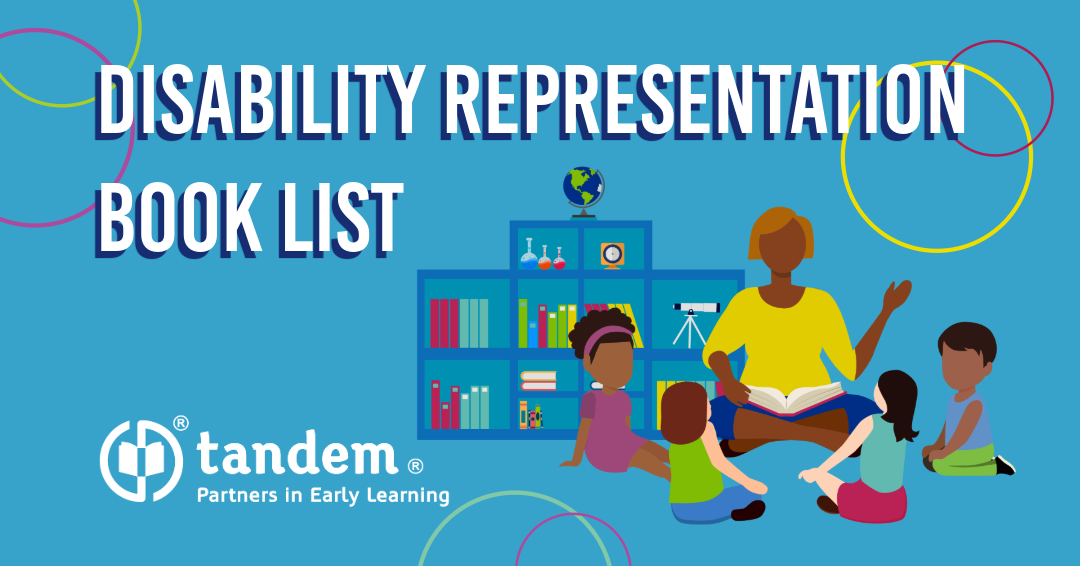
11 Beautiful Children’s Books Featuring Disability Representation
Everyone experiences the world in their own unique way. This collection of books highlights diverse perspectives, celebrating the many ways people communicate, move, and navigate their surroundings. From nonverbal communication and assistive technology to sensory experiences and adaptive tools, these stories help foster understanding, inclusion, and empathy.
Through engaging narratives and vibrant illustrations, children will learn that differences are not limitations, but simply different ways of being in the world. Each book provides opportunities for meaningful conversations, encouraging children to appreciate diverse abilities, recognize accessibility, and find ways to support and include others in their daily lives.
This book list was thoughtfully compiled with the expertise of Joanne Funtila, Inclusion Specialist at CocoKids, in collaboration with Tandem’s Book Selection Committee, ensuring a diverse and meaningful collection that promotes inclusivity and representation for chidlren ages 1 – 8 years old.
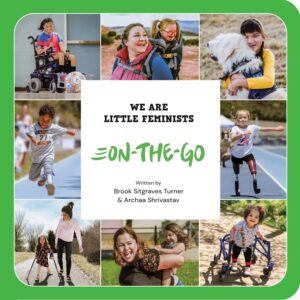
We are Little Feminists: On-the-Go
Written by Brook Sitgraves and Archaa Shrivastav
This board book is filled with photos of people with different mobilities such as, a child using a wheelchair to play a game, a child with a prosthetic leg to run, and more.
Age level: 1 – 3
Talking Tip: Talk to your child about the different ways they move and notice what they use to help them do it. Some people, just like in this book, showcase different mobilities. The wheelchair, walkers, prosthetic body parts, and more are helpful tools and gadgets to help them move.
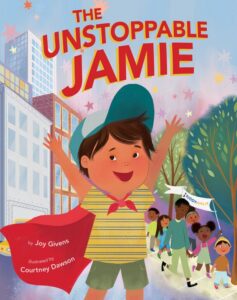
The Unstoppable Jamie
Written by Joy Givens
Illustrated by Courtney Dawson
When Jamie’s picture is selected to be displayed in Times Square for the NDSS Buddy Walk, he and his family travel to the city to see it! Nothing stops Jamie, even when he loses his super gadget that helps him stay focused. Jamie, who has Down syndrome, and his family use different strategies to navigate overwhelming situations, such as deep breathing, tight hugs, and wearing headphones.
Age level: 3 – 5
Talking Tip: Talk to your child about their favorite superhero, what they wear, and the gadgets they use. Then, share your own super gadgets that help you every day, like eyeglasses, a hat, a laptop, or a car. You might say, “I wear my super eyeglasses to see super clearly!”
Encourage your child’s imagination! Ask: What super gadgets do you wear? Are those super shoes to help you walk on hot lava?
Have fun connecting everyday items and abilities to their own special superpowers!
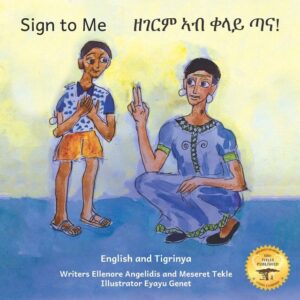
Sign to Me (English and Tigrinya)
Written by Ellenore Angelidis and Meseret Tekle
Illustrated by Eyayu Genet
A young Ethiopian child, born deaf, struggles to connect with those around him until he meets his cousin, who knows Sign Language. With his cousin’s support and the lessons he learns at school, he discovers the power of signing, opening up a new world of communication. As his family learns alongside him, they grow closer, proving that language goes beyond words.
Age level: 3 – 5
Talking Tip: Talk to your child about the different ways people communicate. Some use their hands, like the child and cousin in this story, while others speak with their voices in different languages such as English, Spanish, Tagalog, and more. If your family knows Sign Language, share a sign that makes you feel loved and connected, such as care, love, or family.
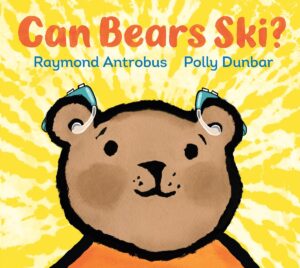
Can Bears Ski?
Written by Raymond Antrobus
Illustrated by Polly Dunbar
Little Bear feels the world around him, like the bed shaking when Dad wakes him or the floor vibrating when his teacher stomps. But when his friends laugh at jokes he doesn’t understand and keep asking, “Can bears ski?” he knows something is missing.
A visit to the audiologist reveals he has been experiencing deafness. With new hearing aids, he realizes that “Can bears ski?” is actually “Can you hear me?” As the world suddenly grows loud and unfamiliar, Little Bear, with Dad’s support, learns to navigate this new world one sound at a time.
Age level: 3 – 5
Talking Tip: Little Bear experiences the world in a different way and learns something new about himself. Talk with your child about how he might feel and what we would do in Little Bear’s situation. For example, you could ask:
- How do you think Little Bear felt when he couldn’t understand what his friends were saying?
- What would you do if you couldn’t hear sounds around you?
- How do you think Little Bear felt when he heard new sounds with his hearing aids?
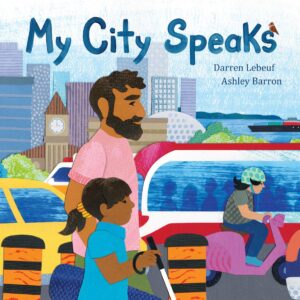
My City Speaks
Written by Darren Labeuf
Illustrated by Ashley Barron
A visually impaired girl and her dad stroll through her city. As she walks, she describes her city using her senses. This book showcases everyday city life experiences through the girl’s perspective.
Age level: 3 – 5
Talking Tip: After sharing My City Speaks, talk with your child about how people experience the same places in different ways. Reinforce that no one way of experiencing the world is better, just different. Discuss the tools the young girl in the book uses to explore her community, such as canes, guide dogs, audio signals at crosswalks, and braille signs.
Take a walk with your child and encourage them to explore their surroundings using their senses. Ask: What do you smell? Hear? Feel? See?
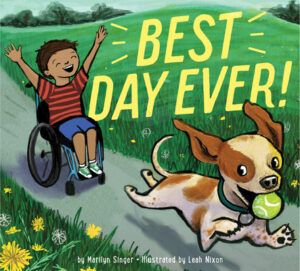
Best Day Ever!
Written by Marilyn Singer
Illustrated by Leah Nixon
This is a dog’s story of best, not so best, and worst day along with his best friend who uses a wheelchair. This book beautifully portrays the bond between the child and their dog, emphasizing companionship, independence, and inclusion.
Age level: 3 – 5
Talking Tip: Talk to your child about their favorite animal or pet. Ask them where they take their pet or where they play with it. Encourage them to think about how they care for their pet, just like dog’s best friend does in the book.
Explain how dogs help people in different ways. Invite children to illustrate, describe, and share their own “best day ever” moments.
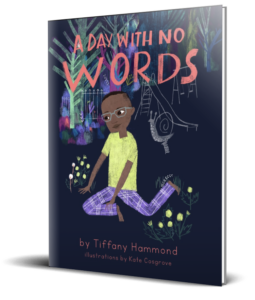
A Day with No Words
Written by Tiffany Hammond
Illustrated by Kate Cosgrove
A Day With No Words follows an autistic boy’s daily life told from his own perspective. The first person narration strengthens the voice of the protagonist by showing how autism is fully a part of him, not just something he has to live with. A Day With No Words offers a touching and insightful perspective on autism, inclusion, and the many ways people express themselves beyond spoken words.
Age level: 4 – 8
Talking Tip: After reading A Day With No Words, talk with your child about different ways to communicate. Ask questions such as:
- How can you share your thoughts without talking?
- How would it feel if others didn’t listen because you communicate differently?
- Why is listening important?
Encourage your child to think of ways of showing care or having fun with friends without using words.
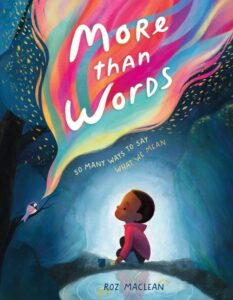
More Than Words: So Many Ways to Say What We Mean
Written and Illustrated by Roz Maclean
Nathan is quiet in class and notices his classmates express themselves in many different ways. They communicate through facial expressions, braille, typing, gestures, singing, text-to-speech tablets, sign language, and more. By watching them, he learns that everyone has something to share and that listening builds friendship. With beautiful illustrations and extra vocabulary tips, this book celebrates the many ways we communicate and connect with each other.
Age level: 4 – 8
Talking Tip: As you share More Than Words: So Many Ways to Say What We Mean, talk with your child about the many ways they communicate and express themselves and their needs. Talk about how others may communicate without using words.
Ask:
- How do you notice the people around you communicate?
- Do you notice them doing anything other than talking?
- How can we help a friend who communicates in a different way feel included?
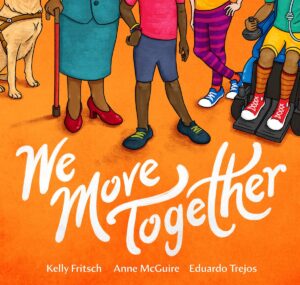
We Move Together
Written by Kelly Fritsch and Anne McGuire
Illustrated by Eduardo Trejos
This beautifully illustrated book explores the way people move through spaces in the world. Celebrating inclusion and diversity, We Move Together will spark wonderful conversations about disability, accessibility, fairness, community, and advocacy.
Age level: 4 – 8
Talking Tip: Ask “What does it mean to move together?” and discuss how communities can ensure everyone is included. Point out examples of accessibility in everyday life, such as ramps, elevators, and accessible playgrounds. Explain that disability is not a problem with a person, but often a result of barriers in the society. Ask: “How can we change our space so that everyone can participate?”
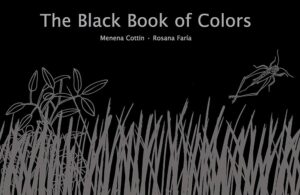
The Black Book of Colors
Written by Menena Cottin
Illustrated by Rosana Faria
This unique, immersive, and sensory-rich book explores how people who are blind experience color through touch, taste, smell, and sound. It provides readers an opportunity to engage in a different way of perceiving the world. The entire book is printed in black, using embossed illustrations and braille text to allow readers to “see” through touch.
Age level: 4 – 8
Talking Tip: Ask children, “How would you describe a color without using your eyes?” Encourage them to think about how different senses help us understand the world. Show how braille is a way for people with visual impairments to read. Invite your child to close their eyes and feel the embossed illustrations to engage their sense of touch.
Have children describe objects using their senses other than sight. For example ask, “How does this apple feel? Smell? Taste?”
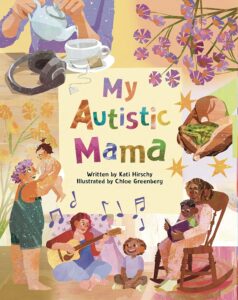
My Autistic Mama
Written by Kati Hirschy
Illustrated by Chloe Greenberg
A book about describing mothers who have autism from their children’s perspective. Their love of learning new things, preferred textures, safe-food, gadgets, and ways they encourage their children to express themselves and think outside of the box.
Age level: 4 – 8
Talking Tip: Talk to your child about their loved one’s favorite foods, likes, and dislikes. This can be a fun “get to know your person” activity. Ask questions like, “What does (Mom, Dad, Nana, etc.) enjoy eating?” or “Do they have a favorite activity to do with you or on their own?”
Connect by asking your child the same questions about themselves. This book explores what some Moms like and don’t like, creating opportunities for you and your child to relate and share.
Tandem Book Selection Committee
Tandem’s Book Selection Committee is a group of Tandem staff and board members who regularly meet to discuss, source, and vet children’s book titles for Tandem’s circulating and giveaway book collection. Central to this committee’s mission is sourcing high quality, multicultural, multilingual books that validate a child’s self-worth and broadens their understanding of the world, and offer engaging, inclusive, age-appropriate content that sparks conversations and evokes emotion.

